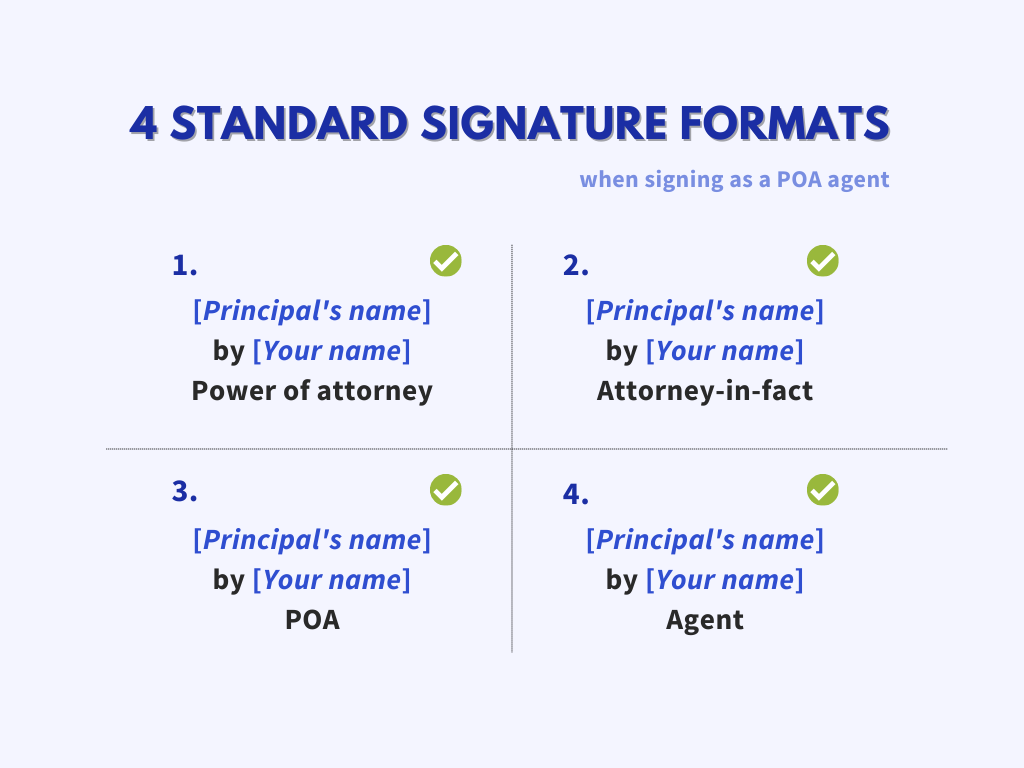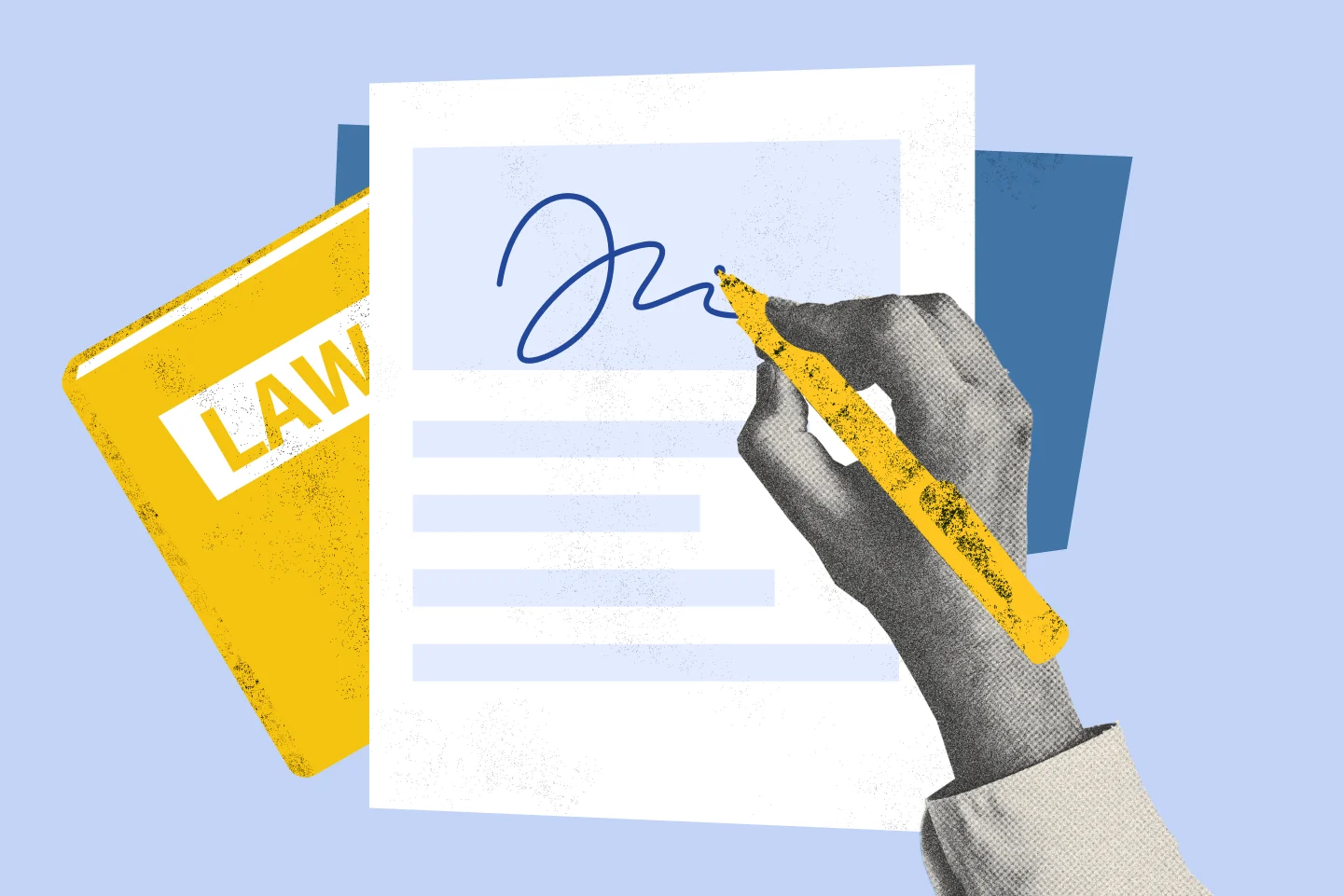Would you trust someone else to sign your paycheck or sell your house? When you act under a power of attorney, you carry exactly that level of responsibility for someone else. That’s why learning how to sign as POA is essential.
Your signature puts their finances, property, and medical decisions on the line, so mistakes simply aren’t an option. Here’s how to make sure you sign correctly.
What Is a Power of Attorney?
A power of attorney lets someone act on your behalf. The person granting this power is the principal, and the one acting is the agent or attorney-in-fact. You can name multiple agents if needed.
Some POAs cover finances, while others cover medical decisions or are limited to specific tasks. Although rules vary by state, many follow the Uniform Power of Attorney Act.
How to Sign as a POA
Knowing how to sign a document as a power of attorney makes things easier for you and the person you’re helping. Use these pointers to avoid delays or questions about your signature.
1. Start with the Right Form
If you don’t already have a power of attorney in place, start by creating one. Legal Templates offers easy-to-use POA forms you can customize in minutes, so you’ll have a document that’s legally sound and ready when you need it.
2. Read the POA Document Carefully
Start by understanding the powers the POA gives you and what actions you can take. Then, check if the POA is active, since some only start after a certain date or if the principal becomes incapacitated.
Pay close attention to any special instructions. You might need to work with a co-agent or get approval from the principal (if they’re still capable) or a third party, like a doctor or financial institution, before making certain decisions.
3. Follow Any State or Institutional Rules
Before signing, check the rules in your state and with any institution involved. Some states require specific signing steps, and banks and other institutions may have their own requirements.
For example, real estate deals often need notarized POAs that must be recorded. You can usually sign on paper or electronically, but it’s best to confirm what is accepted ahead of time.
4. Use the Correct Signature Format
You’re signing on behalf of the principal, so your signature needs to make that clear. It should never look like you’re signing for yourself. There are a few ways to do this.
 Each option makes it clear that you’re signing as the agent. Here’s a sample of what a power of attorney signature should look like:
Each option makes it clear that you’re signing as the agent. Here’s a sample of what a power of attorney signature should look like:

5. Sign Only for Things You’re Authorized to Handle
Double-check what the POA covers, like money, health care, property, or decisions in emergencies. If there are limits, follow them closely. Avoid taking on anything that isn’t clearly allowed.
If you’re handling something significant, like selling a house, check if the POA needs to be recorded first. Some states or banks require that step before they’ll accept it. Always follow what the document allows, and nothing more.
6. Keep Records of Everything You Sign
Leave a paper trail for everything you sign. Save receipts, contracts, and emails that show what you did and why. That way, you can show what you did and why if anyone asks later. Consider keeping a dated log book or journal of acts that you performed as an agent or attorney-in-fact.
7. Bring the POA Document With You
Banks, title offices, and other places will want to see the POA before letting you sign. Bring the original or a certified copy, as some may keep one for their records. You’ll also need a government-issued photo ID to confirm your identity and avoid delays.
How to Sign a Check as a POA?
You can sign a check as POA if the document gives you that power. Before you do, check with the bank. Some banks have their own forms or approval processes.
Once the bank approves you, you can sign or endorse checks as the agent. Just be sure to follow the limits set in the POA.
Don’t Take Signing Lightly
What you sign today can impact someone’s tomorrow. When you act under a power of attorney, you can be responsible for their money, property, health decisions, and legal rights. That’s why you should know exactly how to sign as a POA before you act. You need to tread carefully.
Abuse of financial powers is a real concern, with 94% of people believing it happens. Even small mistakes can cause serious problems, even if you didn’t mean any harm. If something isn’t clear, ask questions or get legal help before you sign. A quick check now can prevent bigger issues down the road.



